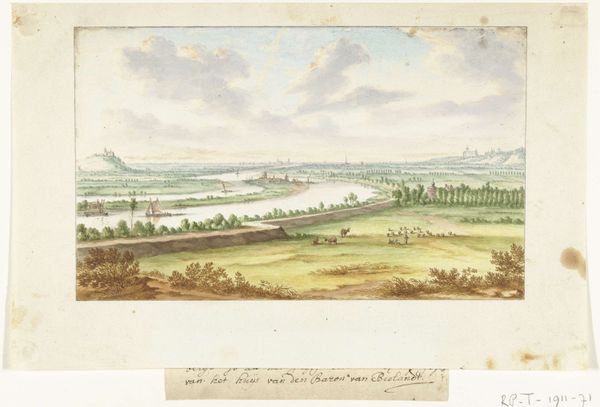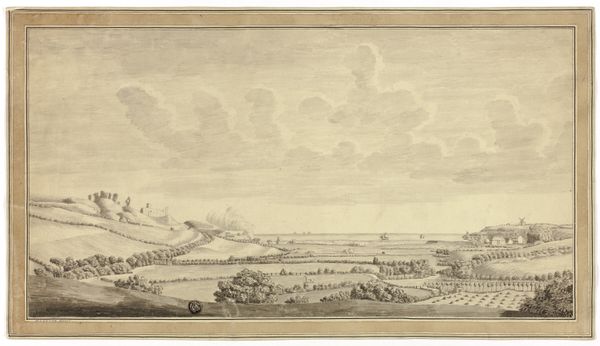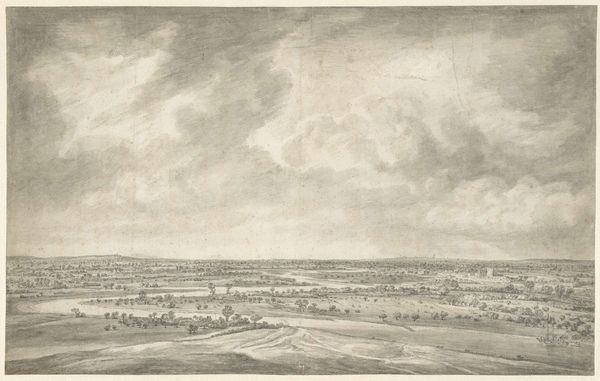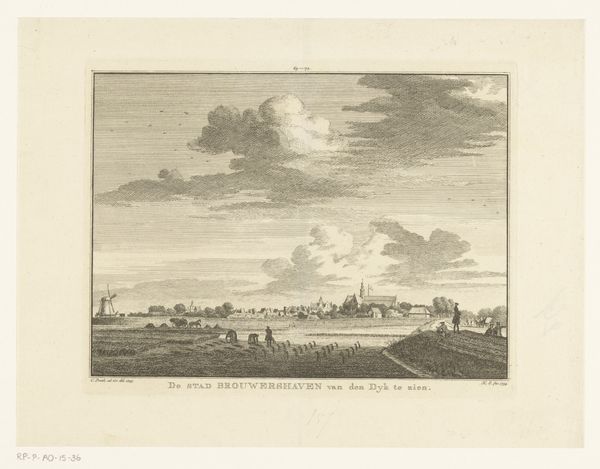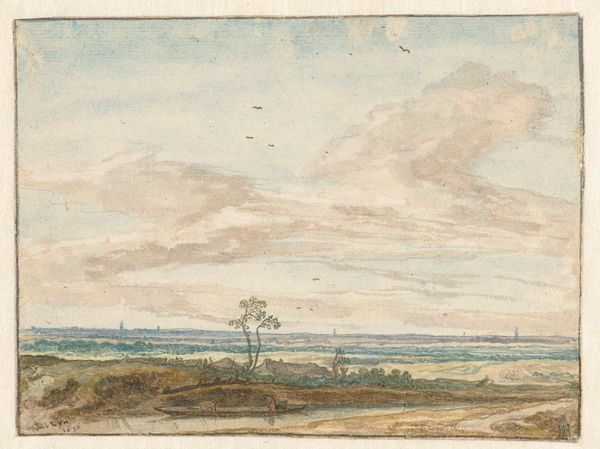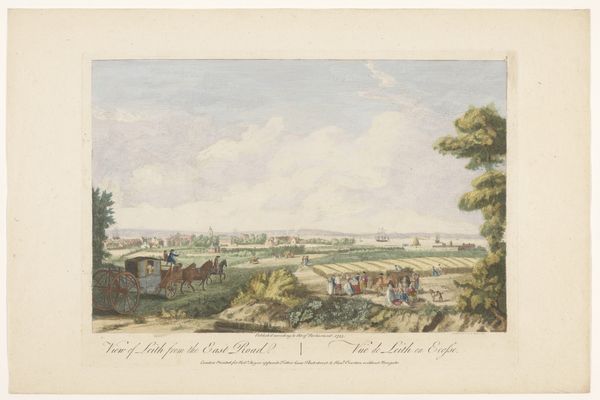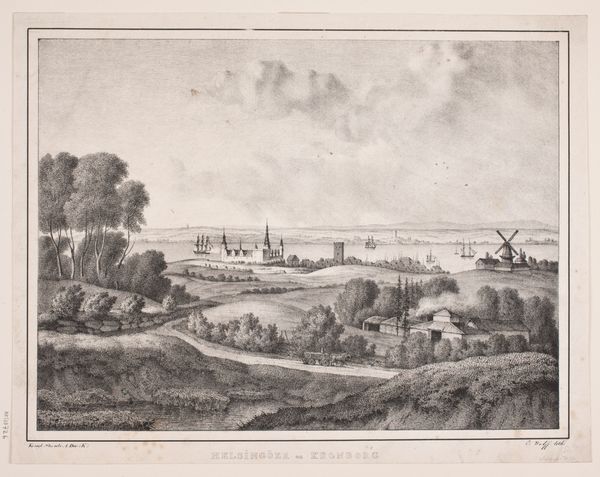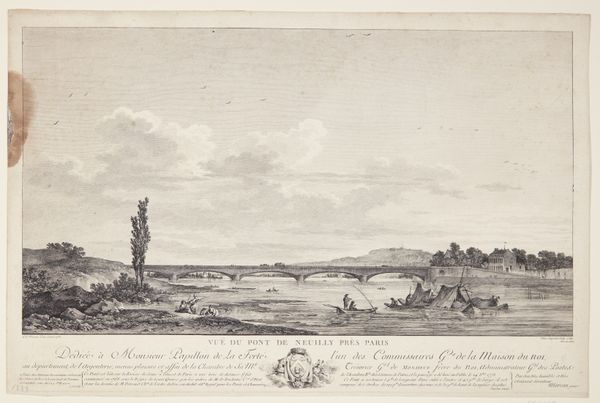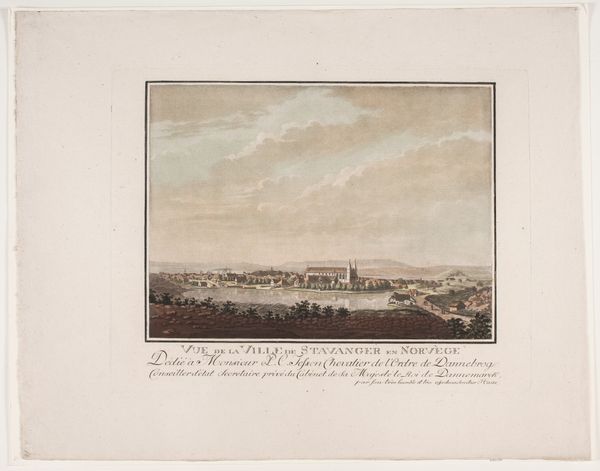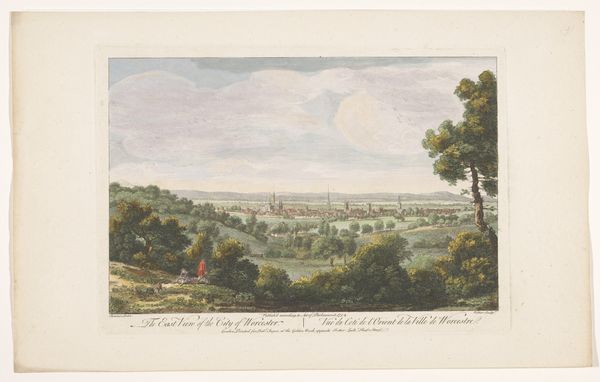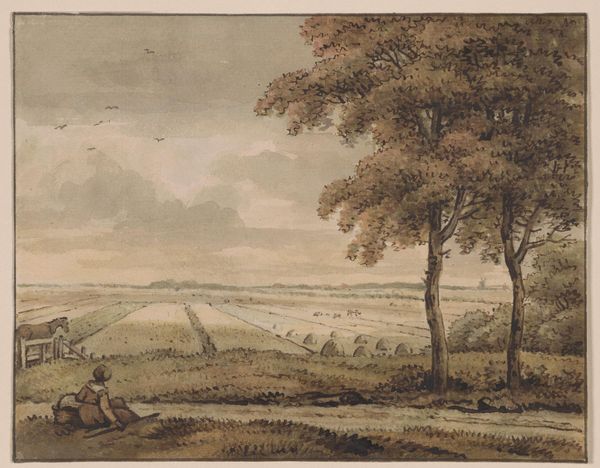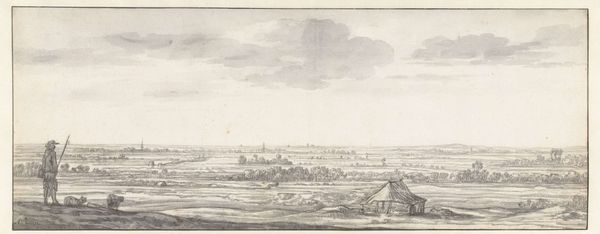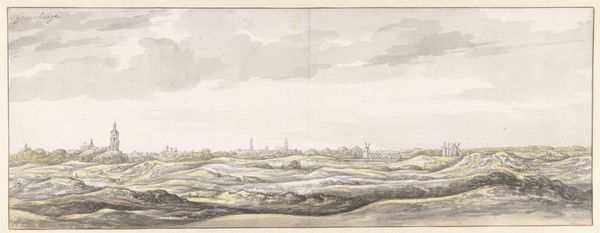
drawing, print, etching, watercolor
#
drawing
# print
#
etching
#
landscape
#
etching
#
watercolor
#
watercolor
Dimensions: sheet: 9 7/8 x 16 in. (25.1 x 40.6 cm)
Copyright: Public Domain
Curator: Here we have "Panoramic Landscapes," an etching and watercolor drawing from the 18th century, created by an anonymous artist. It’s currently held at the Metropolitan Museum of Art. Editor: It strikes me as both grand and somehow melancholic. That immense sky looms over everything. The limited palette – all browns and grays – adds to the effect. What a use of seemingly simple materials. Curator: That subdued palette definitely speaks to the conventions of the time. Landscape art in the 1700s often aimed to convey a sense of order and harmony within a perceived natural hierarchy, something tied into the philosophical views on land ownership. Editor: It also shows us something about material access. What was available in the studio? What sort of paper was being used and by whom? The faintness suggests a conservative use of pigment. Were pigments precious? Was the labor to prepare and lay the washes considered and valued? Curator: Precisely. Consider too, the burgeoning merchant class of the era; landscape views of city planning spoke to their growing aspirations and sense of belonging. Note the meticulous rendering of the buildings along the horizon and a somewhat active roadway in the foreground. Editor: And that activity—tiny figures. Are they moving materials for building, or goods for trade? Or is it just for leisure? This rendering also begs the question about artistic labor at that time. Is this artist part of the merchant class, dependent on its patronage, or making a wage by serving the city’s need for representation? The piece presents questions of accessibility and aspiration through process, materials, and subject matter. Curator: Exactly, it provides a window into the evolving urban fabric and the social structures underpinning it. And those wispy clouds—it's the artistry, the mastery of conveying atmospheric perspective. This drawing acts as more than a mere geographical record of The Hague. Editor: Absolutely. The delicate etching, overlaid with the washes of color. They're also offering some information, aren't they? We are also looking at who did what on it, when. The making tells stories beyond the depiction of the landscape. Curator: This panoramic landscape speaks to societal aspirations and emerging economic systems and values of the time. Editor: I'm struck by the layers, the material interactions – each mark on the paper contributing to its cultural weight.
Comments
No comments
Be the first to comment and join the conversation on the ultimate creative platform.
